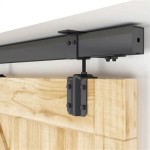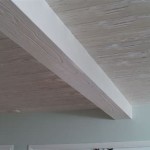What is Ceiling Design Called?
Ceiling design is an important aspect of interior design that can have a significant impact on the overall look and feel of a space. There are many different types of ceiling designs, each with its own unique characteristics and benefits.
Coffered ceilings are a classic type of ceiling design that features recessed panels or coffers. Coffered ceilings can add a sense of depth and dimension to a space, and they can also be used to create a more formal or traditional look.
Tray ceilings are another popular type of ceiling design. Tray ceilings are created by raising the center of the ceiling and then lowering it around the edges. This creates a tray-like effect that can add a touch of elegance to a space.
Cathedral ceilings are high, vaulted ceilings that are often found in churches and other large buildings. Cathedral ceilings can create a sense of grandeur and spaciousness, and they can also be used to improve natural lighting.
Suspended ceilings are a type of ceiling that is hung from the main ceiling structure. Suspended ceilings are often used in commercial buildings, as they can be easily removed and replaced for maintenance or repairs.
Acoustic ceilings are a type of ceiling that is designed to absorb sound. Acoustic ceilings are often used in noisy environments, such as offices, schools, and hospitals.
When choosing a ceiling design, it is important to consider the overall style of the space, as well as the desired function of the ceiling. For example, a coffered ceiling may be a good choice for a formal living room, while a suspended ceiling may be a better choice for a commercial office.
In addition to the different types of ceiling designs, there are also a number of different materials that can be used to create ceilings. Some of the most common ceiling materials include:
- Drywall: Drywall is a common and affordable ceiling material that is easy to install. Drywall can be painted or textured to create a variety of different looks.
- Plaster: Plaster is another common ceiling material that is durable and fire-resistant. Plaster can be applied in a variety of different textures, and it can be painted or stained to create a custom look.
- Wood: Wood is a beautiful and versatile ceiling material that can be used to create a variety of different looks. Wood ceilings can be painted, stained, or left natural to create a warm and inviting atmosphere.
- Metal: Metal is a durable and low-maintenance ceiling material that is often used in commercial buildings. Metal ceilings can be painted or coated in a variety of different colors and finishes.
- Acoustic tiles: Acoustic tiles are a type of ceiling material that is designed to absorb sound. Acoustic tiles are often used in noisy environments, such as offices, schools, and hospitals.
When choosing a ceiling material, it is important to consider the desired look and function of the ceiling, as well as the budget. By carefully considering all of these factors, you can choose the perfect ceiling design for your home or business.

The 8 Diffe Types Of Ceilings 9wood

The 8 Diffe Types Of Ceilings 9wood

What Is This Ceiling Design Called Doityourself Com Community Forums

Types Of False Ceiling Gypsum Glass Wooden Fiber Materials Nerolac

Types Of False Ceiling Gypsum Glass Wooden Fiber Materials Nerolac

Explore The Best Types Of Ceiling Designs For Modern Homes Foyr

Types Of False Ceiling Gypsum Glass Wooden Fiber Materials Nerolac

False Ceiling Design For Bed Room Trending And Stylish Designs

Latest Simple False Ceiling Designs Saint Gobain Gyproc

Ultimate Pop Design Guide Tips Ideas And Inspiration Beautiful Homes
Related Posts








